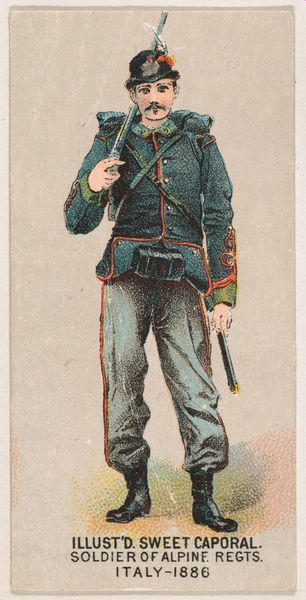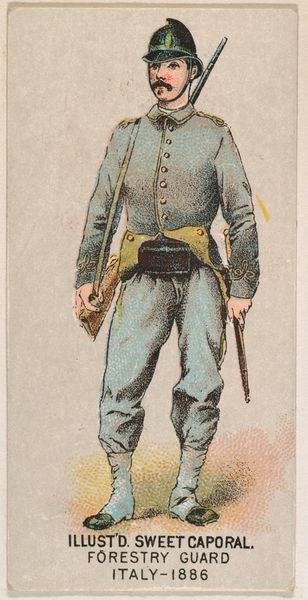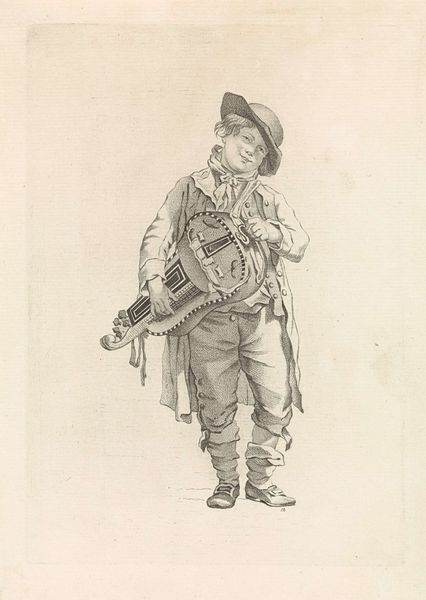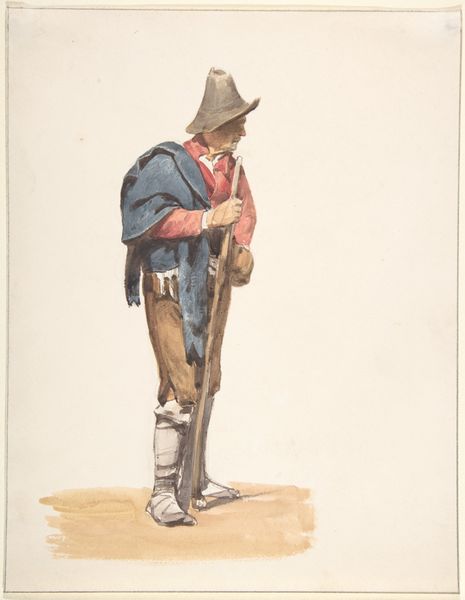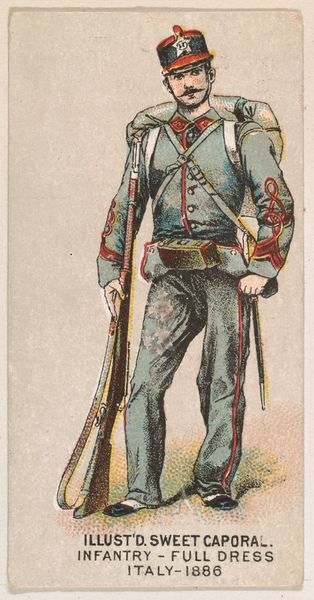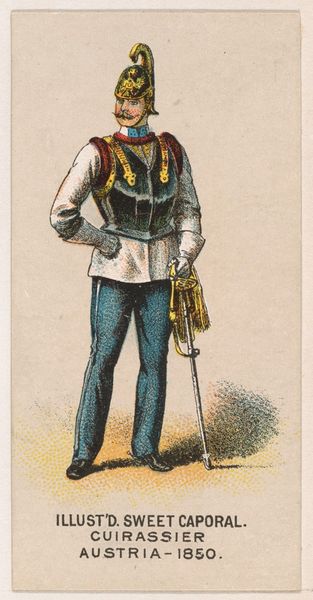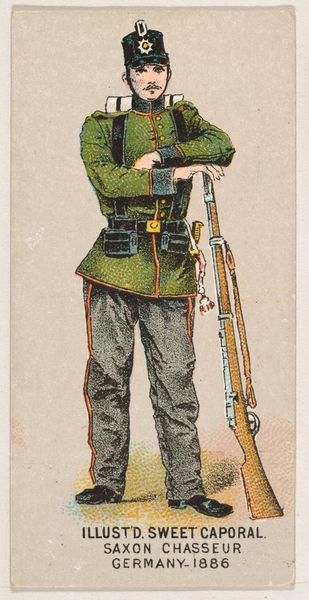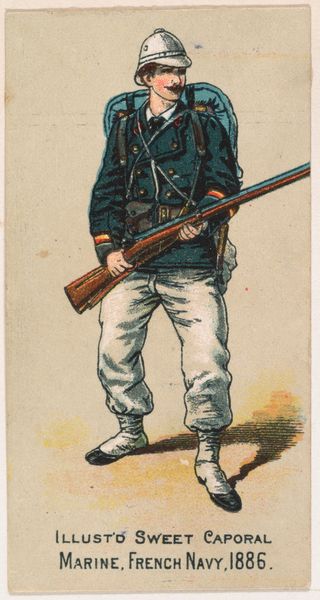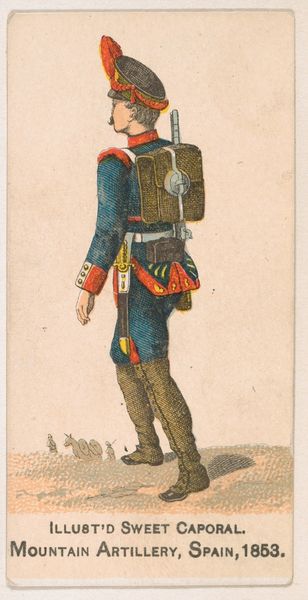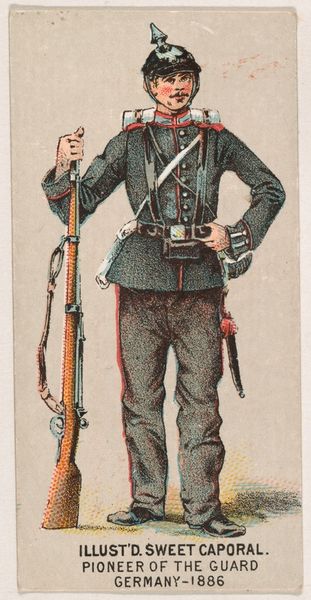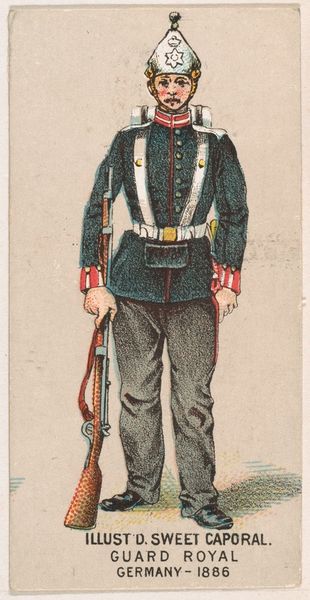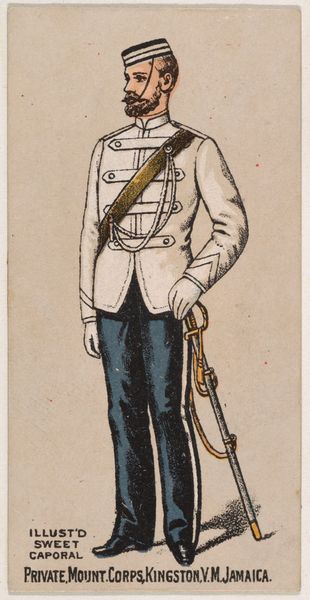
drawing, watercolor
#
portrait
#
drawing
#
figuration
#
watercolor
#
historical fashion
#
soldier
#
19th century
#
watercolour illustration
#
watercolor
Copyright: Public domain
Curator: Here we have Emil Hünten’s "Studie Eines Dänischen Soldaten," a watercolor and drawing of a Danish soldier. It's a study, so likely a preparatory sketch. It doesn't have a confirmed date, but it gives us a glimpse into 19th-century military fashion. What strikes you initially? Editor: It has an earnest quality. There’s a sense of waiting, maybe quiet resolve. The uniform is carefully rendered, but the gaze is somewhat unfocused. Is it trying to say something about the experience of military life? Curator: Perhaps. The meticulous detail hints at an objective record of military attire – his striking helmet, the red collar peeking through, his pack and rifle. The artist seems fascinated by the visual culture of military power, while maybe, as you said, also inviting a peek at the individual beneath. The soldier almost blends into a muted background of light-washed paper. Editor: Right. The washed watercolor evokes a sense of fragility that almost clashes with the implied might of the uniform. In the context of 19th-century European conflicts, the image is compelling. Denmark was in constant geopolitical tension with then Prussia, in this setting it's an assertion of sovereignty. Does this suggest something about national identity and pride? Curator: Absolutely. Hünten was, as you say, chronicling more than just fashion. He was documenting a moment of potential conflict, an assertion of military readiness. This is the portrait of a soldier but a country readying itself. And yet… that hint of weariness on his face is unmistakable to me. Editor: That blend of individual vulnerability and nationalist assertion makes it deeply compelling. It forces us to confront the human cost of geopolitical tensions. We see these uniforms, the equipment, but this is, importantly, about the individual at the front lines. Curator: Indeed. It becomes more than a simple military portrait. It's a question of duty and national narrative weighed against an interior life. Editor: Thanks. Considering this study, it feels like a conversation—between history, duty, and the quiet moments of a soldier’s experience. Curator: It is a reminder of how artworks, even seemingly straightforward sketches, can unlock broader histories of a period—an artifact capable of communicating both an essence and the weight of existence.
Comments
No comments
Be the first to comment and join the conversation on the ultimate creative platform.
